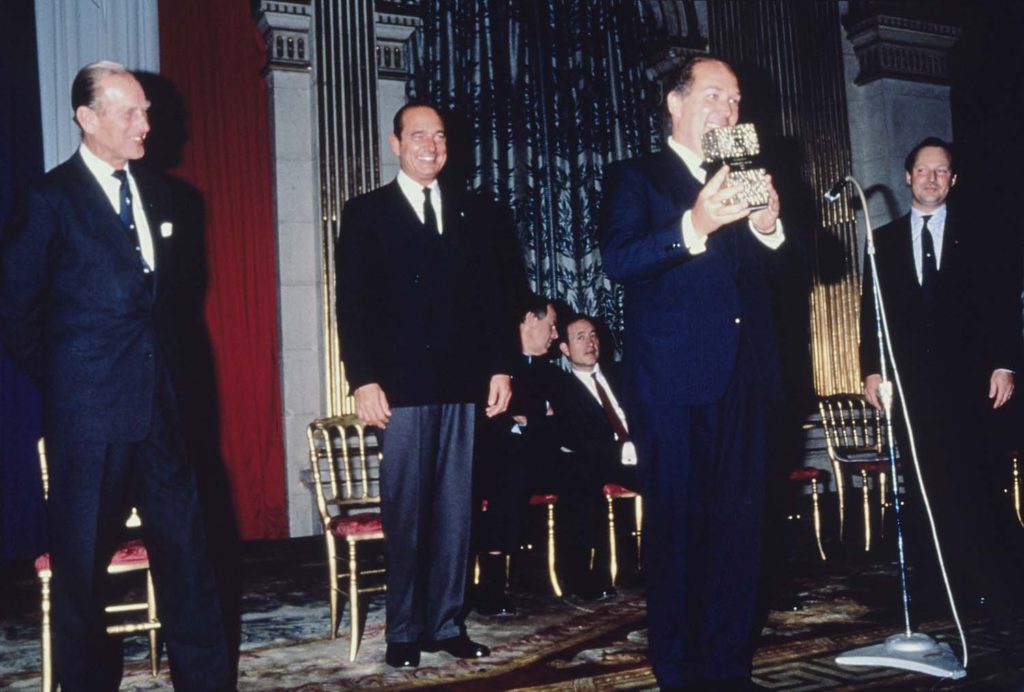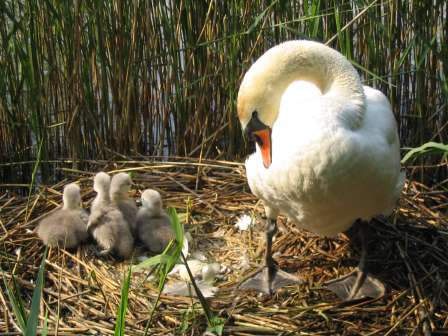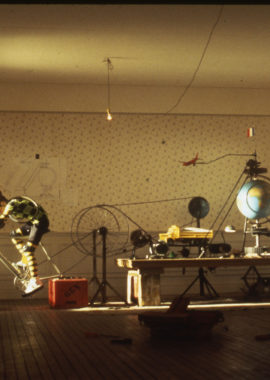In 1987, BNP and the WWF (World Wide Fund for Nature) together launched a countrywide competition for children aged 6 to16 on the theme “Protecting animals firstly means getting to know them better”. As part of the European Year of the Environment, the initiative drew widespread attention from society and prompted patronage in the field of environmental protection.
A BNP-WWF competition to make young people aware of nature conservation
Just over thirty years ago, BNP branches in France found themselves at the centre of a vast operation aimed at the youth to raise awareness of endangered animal species.
The awareness campaign relied on a growing realisation in France of the importance of the struggle for nature. In 1987 for example, WWF France collected 40% of its funds thanks to companies. The conservation of natural areas, the brown bear of the Pyrenees, flamingos of the Camargue, the griffon vulture of the Cevennes or sea turtles of Guyana are all causes that have been supported by NGOs in France.

What does the project consist of? The bank and the World Wide Fund for Nature devised a competition in which ten endangered animals in France had to be recognised from pictures on a poster. To give more visibility to the operation, BNP distributed entry forms in all its branches in France. According to the rules, any youngster could pick up a poster/entry form at a BNP branch and fill in the right answers from May till June 1987.
Besides this awareness action, BNP also financed the publication of the first pamphlet for TRAFFIC (the Wildlife Trade Monitoring Network) to inform the public of the consequences of trade in endangered species.

Besides this project, BNP also financed the publication of the first pamphlet for TRAFFIC (the Wildlife Trade Monitoring Network) to inform the public of the consequences of trade in endangered species.
What is TRAFFIC?
The Wildlife Trade Monitoring Network is a non-governmental organisation that monitors the trade of wild animals and plants. Founded in 1976 by the WWF and the International Union for the Conservation of Nature (IUCN), its aim is to preserve biodiversity and favour sustainable development. The TRAFFIC France office opened in 1987.
Youth answering the call of nature
The competition was widely advertised among youngsters. BNP deployed a communication kit in all its branches in France and press ads were inserted in children’s magazines like Mickey, Picsou, Pif, Fripounet, Spirou and Okapi.
The turnout of the operation was very positive. 700,000 entry forms were distributed throughout France and 140,000 children tried their luck. After the closing date, BNP drew 20,000 winners from the correct entries.

WWF creates a prize to encourage environmental initiatives
To prolong the interest raised by the European Year of the Environment and encourage environmental patronage, the WWF co-launched a prize at the end of 1987. The idea was to single out three companies that had led or supported the best environmental conservation initiatives. Twenty exemplary nature conservation actions were chosen for the first “Entreprises & Patrimoine – Nature” (“companies & heritage – nature”) label, including BNP’s campaign to raise awareness of endangered species.

The three winners in the first year were Panini publications for the best public awareness and education action, Wonder for the best initiative in favour of nature conservation, and BNP for the best sponsorship and patronage action for nature conservation.

1987 marked the beginning of a growing collective consciousness of environmental stakes and the development of corporate patronage in the field of nature conservation.
Did you know?
It was in 1987 that the concept of sustainable development was clearly defined. The United Nations’ World Commission on Environment and the Development published a report entitled “Our Common Future”, known as the Brundtland Report, named after the Norwegian Gro Harlem Brundtland who chaired the WCED at the time.
BNP Paribas BNP Paribas and biodiversity today
While BNP Paribas has made the fight against climate change its top environmental priority, the Group has also defined a plan for the preservation of biodiversity through its funding activities. Certain investments that have a harmful impact on biodiversity are therefore excluded from the bank’s scope of action. This is for instance the case of financing related to trade in animal and plant species that are protected by the CITES convention of 1973, or fishing with drift nets of more than 2.5 km.

BNP Paribas’s commitment to the environment and biodiversity in particular falls within the scope of the Equator Principles that the Group adopted in 2008. The charter contains 10 principles for environmentally conscious investment.
Besides the financing aspect, the Group identified four environmentally sensitive sectors and drew up conservation policies. The sectors in question are palm oil production, paper pulp, mining and agriculture. The Group refrains from developing such projects in regions or ecosystems that are important for biodiversity.

The bank also makes a point of reducing its own environmental footprint in the course of its business and promoting awareness and the sharing of best practices with regard to the environment. The purchase of Lake Virelles in Wallonia by its Belgian subsidiary, BNP Paribas Fortis, is in line with this commitment. The Bank transferred the management of the site, purchased in 1985, to three associations under a 99-year emphyteutic lease. It consists of a 125-hectare lake, one of the largest “natural” water bodies in Wallonia. The lake has entirely been remodelled with natural banks to favour biodiversity. The site also has a nature centre, a bird-watching station and a bird hospital.

The Group has reinforced its commitment to energy transition and decided to reduce its support of polluting energies. That is for instance why it chose to break off its ties with players whose main activity is the exploration, production, distribution, marketing or trading of shale gas and oil and/or oil from tar sands.
Find out more about the Group’s environmental responsibility











